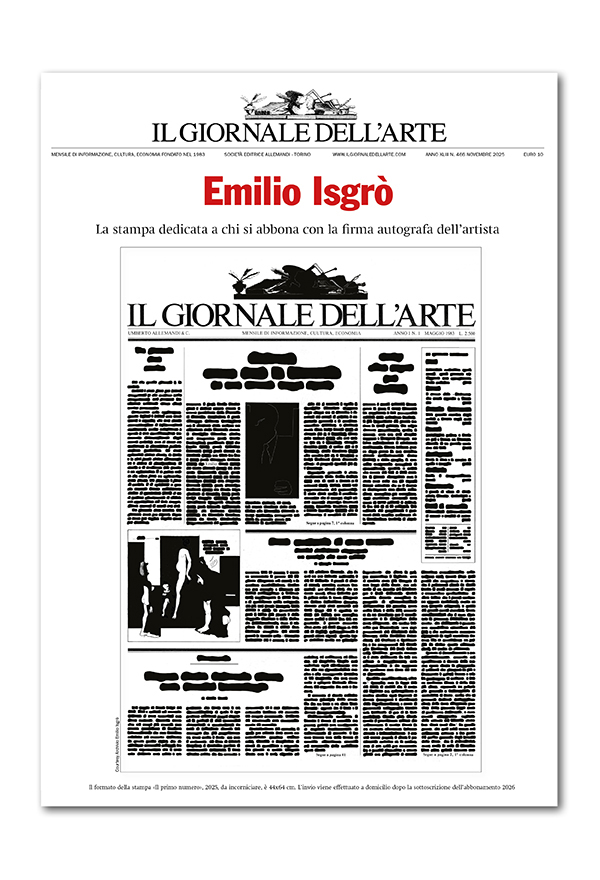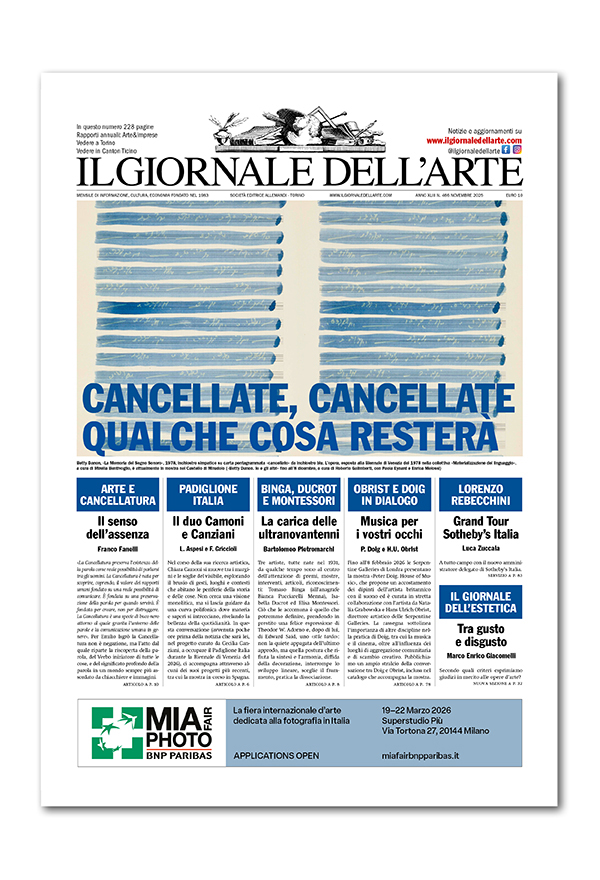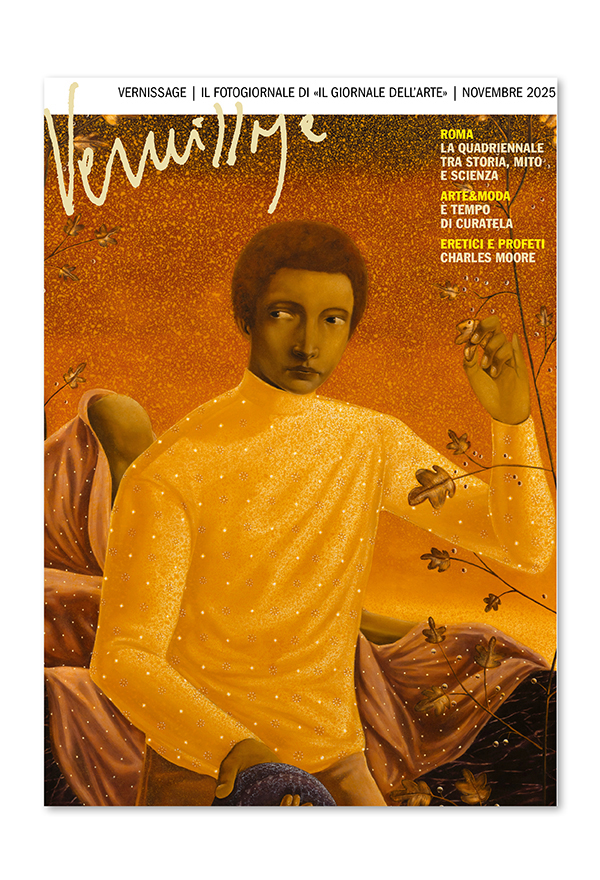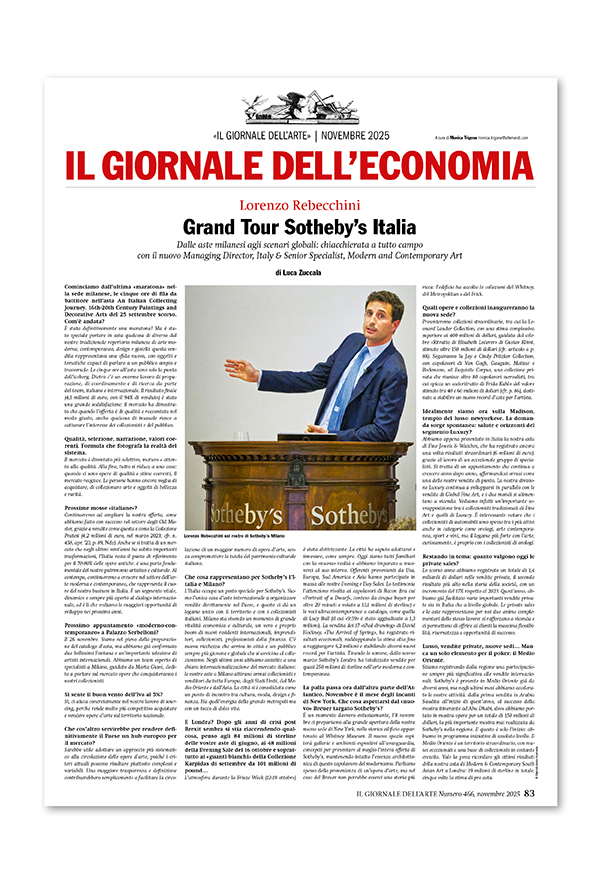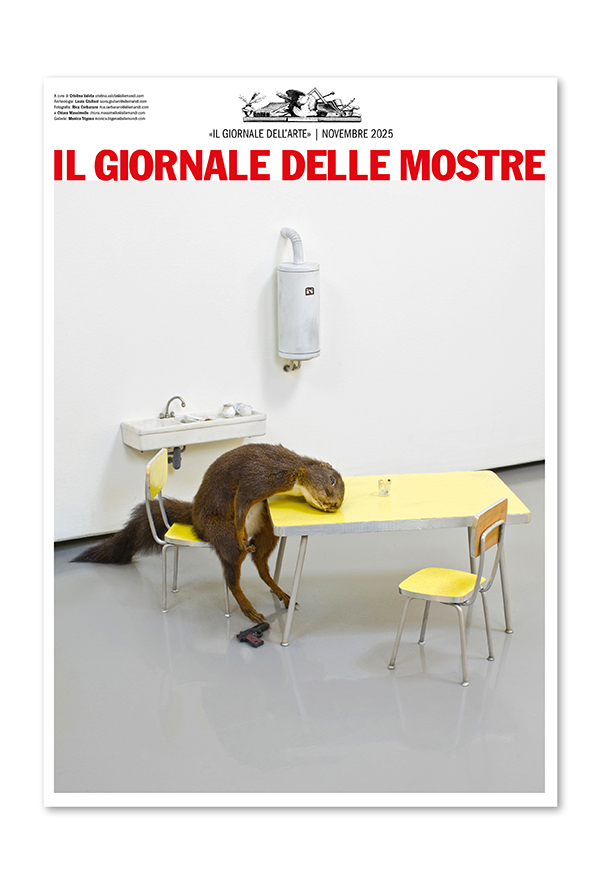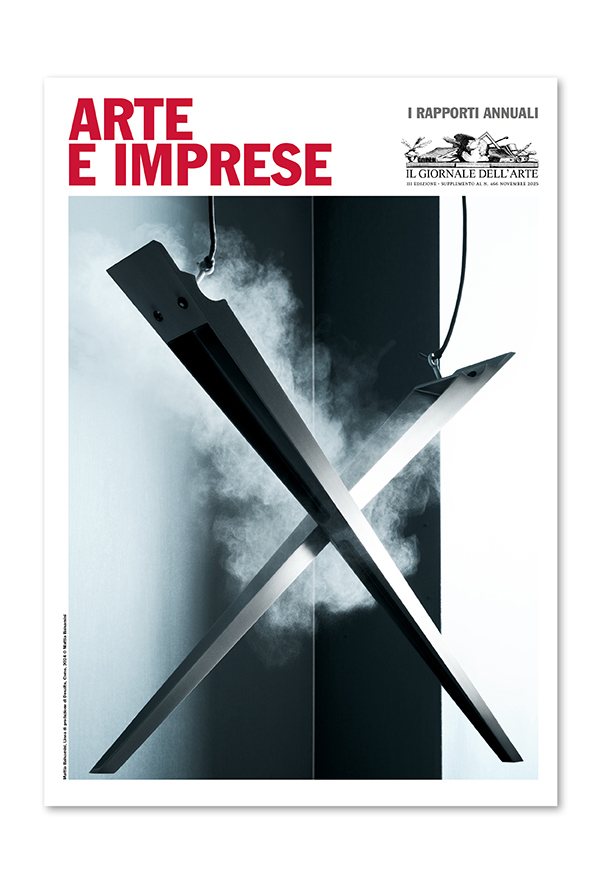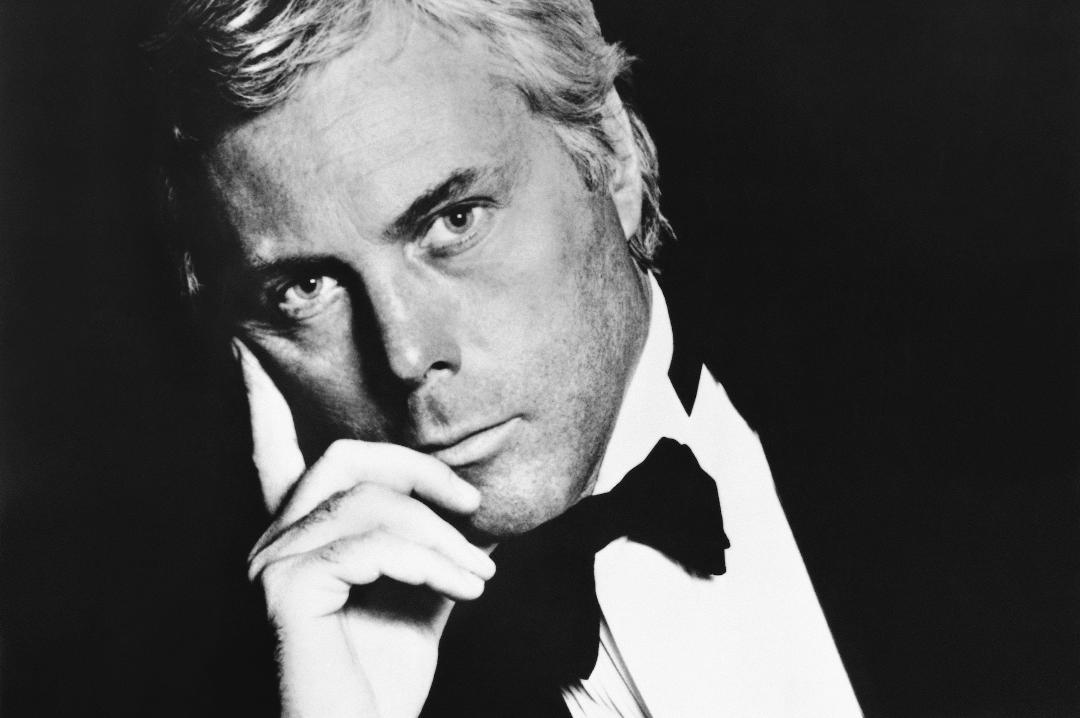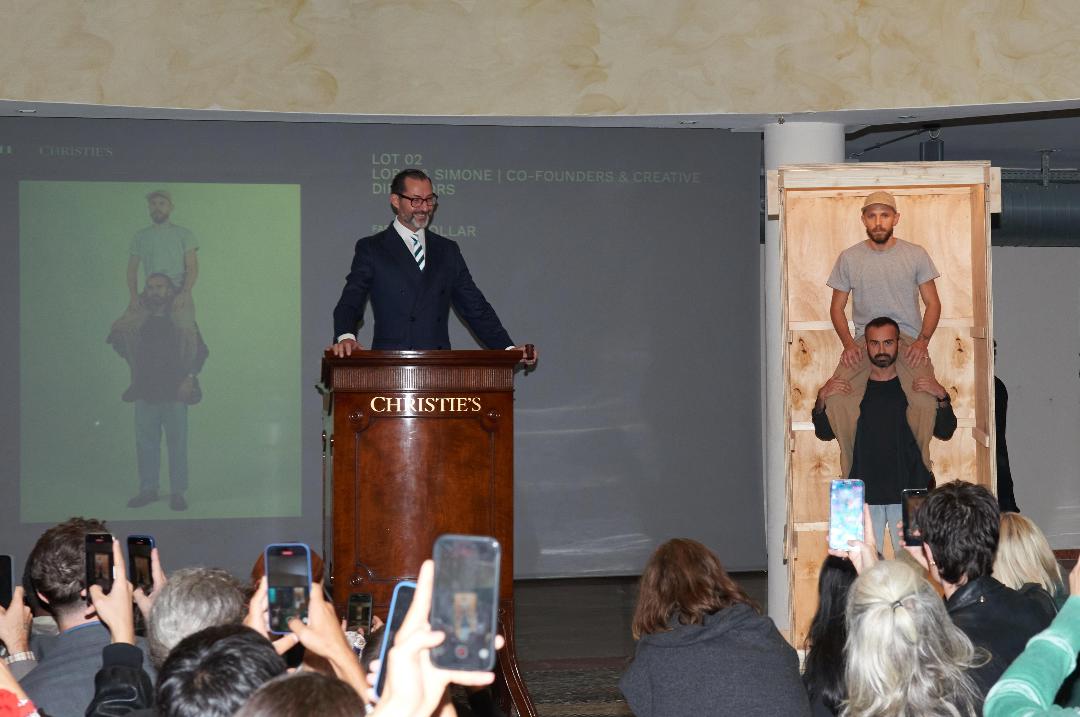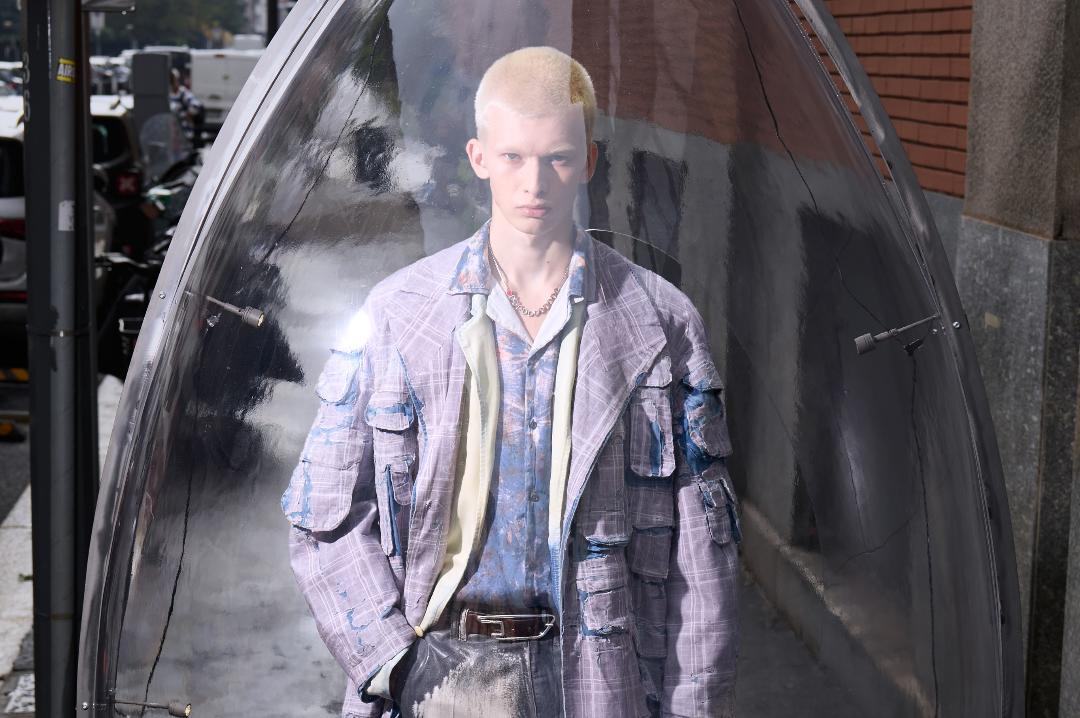
Verifica le date inserite: la data di inizio deve precedere quella di fine
Jacopo Bedussi
Leggi i suoi articoliARTICOLI CORRELATI
E quindi sembra di poter dire che Milano sia tornata, con questa settimana della moda che inaspettatamente ha prodotto più senso e desiderio di quanto mai ci si sarebbe aspettati.
Su tutti, grazie al carico che Dario Vitale ha lanciato in uno stagno e che giorno dopo giorno continua a riverberarsi nei discorsi sulla moda e acquisire forza e plauso. Kathy Horyn, una non certo facile all’elogio, ha scritto nella sua recensione su «The Cut»: «By look 10, an oversized lavender blazer worn with faded royal blue pants and a red T-shirt, I was on board. And by look 22, a tailored charcoal suit with an unbuttoned yellow jean jacket under the coat, I was wondering where Dario Vitale had been all my life» (Già al look 10, una giacca lavanda oversize abbinata a pantaloni blu reale sbiaditi e una T-shirt rossa, ero conquistato. E al look 22, un completo grigio antracite sartoriale con una giacca di jeans gialla sbottonata sotto il cappotto, mi chiedevo dove fosse stato Dario Vitale per tutta la mia vita).
Un inizio che a questo punto potrebbe diventare trainante per un sentimento collettivo, e ribaltare il tavolo e mettere a tacere tutta una serie di odiose speculazioni che aleggiavano sul progetto. O almeno speriamo. Anche perché erano anni che non si vedeva realizzarsi uno di quei piccoli miracoli dell’industria in cui il ruolo delle idee vince a mani basse su qualunque possibile budget. Lo show di Versace lo è stato, e in questo rimettere al centro l’idea invece del potere muscolare del denaro dimostra come l’ingegno e l’urgenza creativa siano ancora e nonostante tutto la forza di cui la moda deve nutrirsi. L’unica forza possibile.
L’ultimo grande e atteso debutto di questi giorni è stata Louise Trotter alla direzione creativa di Bottega Veneta, succedendo al molto bravo e molto rispettato Matthieu Blazy, che tra pochi giorni debutterà invece da Chanel a Parigi, e che aveva lasciato lo storico marchio un po’ con un coitus interruptus. Trotter, britannica, classe 1969, è uno di quei nomi che possono non dire molto ai non addetti ai lavori, ma che ha alle spalle una lunga e solida esperienza in marchi come Calvin Klein, Lacoste e Carven. Tutti esempi di strutture che in modo diverso esistono proprio in quanto marchi e non come piedistalli per i creativi che li animano. Questa nuova esperienza da Bottega Veneta, un brand che è passato negli anni dall’essere puro produttore di accessori ad assumere una complessità e una presenza da marchio di moda, processo accelerato enormemente con l’arrivo di Daniel Lee alla direzione creativa nel 2018 e poi con il già citato Blazy, è quindi qualcosa insieme di nuovo e di conosciuto.
Il suo arrivo annunciato nel dicembre 2024 era stato accolto con curiosità, e nei 10 mesi che sono passati tra quel momento e il primo show, un tempo molto lungo nel sistema della moda di oggi e che fa pensare Trotter avesse trovato con Kering, il gruppo proprietario di Bottega Veneta, un accordo per poter lavorare con una certa calma per costruire la propria visione lontano dalla FOMO, erano state comunque proposte idee interessanti che avevano alzato le aspettative. Prima, invece di sfilare il marzo scorso, era stato organizzato un concerto/reading di Patti Smith per la stampa e pochi intimi, a indicare una direzione e un riferimento culturale senza infilarci alcun prodotto. E poi a giugno il rilascio di una campagna in bianco e nero scattata da Jack Davison tra le più apprezzate degli ultimi tempi. Tra gli altri, i ritratti di Tyler, The Creator, Julianne Moore, Lorenzo Musetti, Ed Buchanan, Neneh Cherry, Lauren Hutton, Terrance Lau, Zadie Smith e Dario Argento sono stati scattati in bianco e nero e poi impaginati con a fianco uno scatto delle loro mani. Un modo laterale e intelligente di parlare di artigianalità e savoir faire allontanandosi dalla banalità dei codici del lusso.
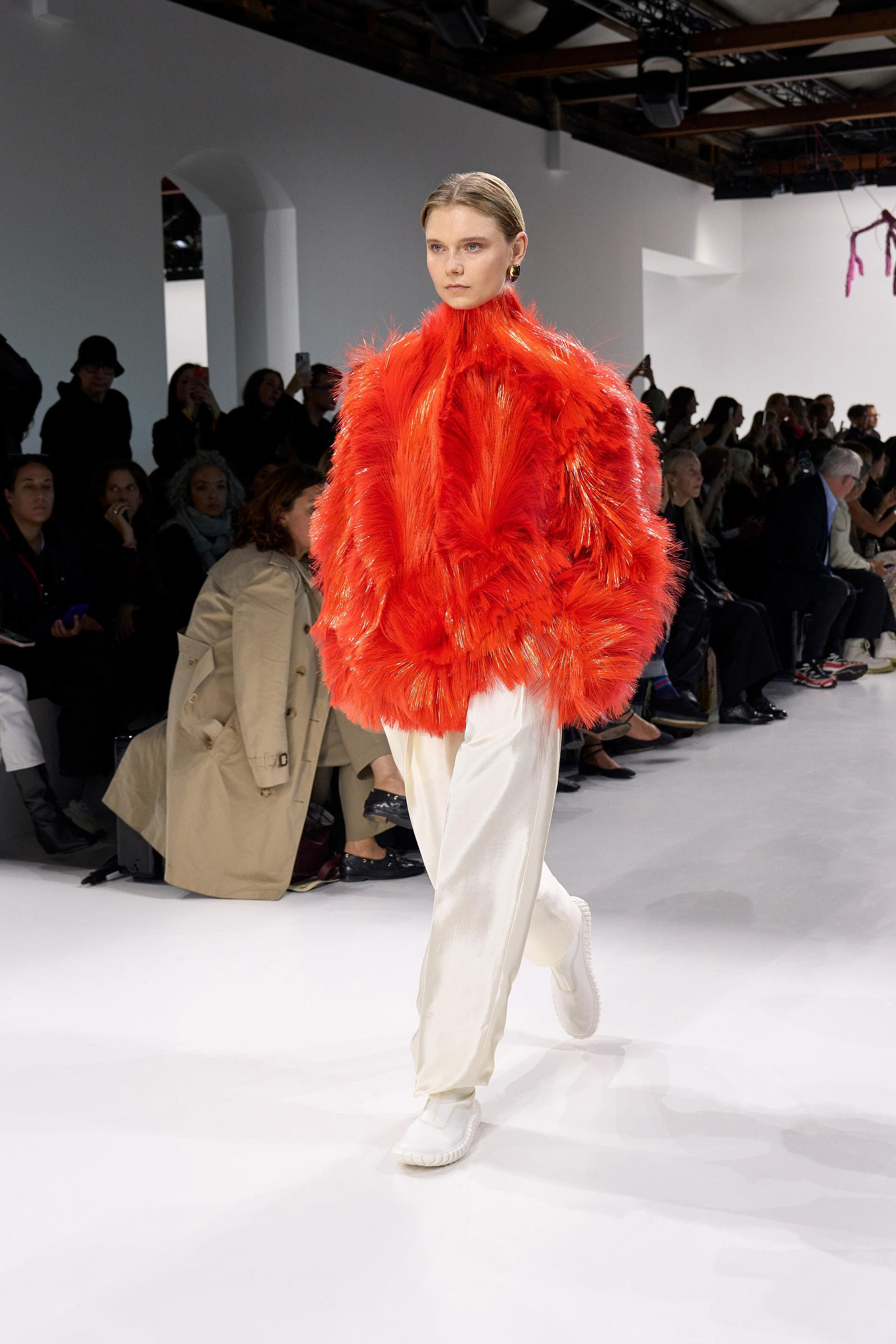
E si arriva così alla sfilata di venerdì, che purtroppo, nonostante le premesse più che incoraggianti, non è stata del tutto all’altezza delle aspettative. Sia chiaro, non c’era niente di sbagliato, gran lusso come di prammatica per Bottega Veneta, nei materiali e nelle costruzione che nulla hanno da invidiare ai predecessori e anzi forse si mescolano ancora di più con un’ipotetica quotidianità, seppur possibile solo per una cerchia ristrettissima della popolazione mondiale. Ma quel che è mancato, e che invece Blazy aveva costruito e affinato stagione dopo stagione con notevole ingegno, è stata la definizione di un registro che andasse oltre gli abiti. La Bottega Veneta di Blazy, oltre alla perfezione e alla sindrome di Stendhal da lusso che Trotter porta avanti in modo eccellente, conteneva una serie di sottotesti sornioni, scapestrati, anche rigorosamente provocatori. Mescolava arte e design, trasformava la poltrona Sacco di Gatti, Paolini e Teodoro per Zanotta in un animalone di pezza con le orecchie, spalmava pvc di Gaetano Pesce dappertutto sul set di uno show, invitava alla sfilata Cicciolina, al secolo Ilona Staller. Non boutade, ma capacità di tenere le fila di una brand identity infiltrandosi in mondi affini, utili a costruire un diorama di senso attorno al core del lusso e della pelle intrecciata, e a parlare a chi pur senza comprare definisce cosa è cool e cosa non lo è. Ma si tratta pure sempre di un buon debutto, e come sempre bisogna lasciare tempo al tempo. Basterebbe riunire in una ricetta più coesa e lievitante ciò che ha proposto negli scorsi capitoli per produrre un risultato maggiore della somma delle parti.
Maximilian Davis da Ferragamo, pur non abbracciandolo completamente, occhieggia all’approccio «Facciamola Prada». Davis, nei suoi tre anni alla direzione creativa del marchio, ha dato prova più volte di avere idee e di saperle realizzare. Ma anche in quest’ultima collezione sembra lavorare più sulla costruzione dei vestiti, «belli» e sterotipicamente lussuosi, con un tocco appena appena accennato di sensualità negli slip dress ripensati e negli abiti con giacca kimono da uomo, che sulla costruzione delle persone (dei personaggi) che dovrebbero indossarli.
Rocco Iannone da Ferrari, un esperimento fashion che nella sua bizzarria potrebbe permettersi faville ma non ha mai avuto il coraggio di osare veramente, per la prima volta propone una collezione coesa e chiara, di cui si capiscono i confini e le intenzioni. Purtroppo, questa coesione non sembra appartenere all’oggi ma a qualcosa che già ci siamo lasciati alle spalle. È comunque un passo avanti.
A chiudere, sabato sera, Giorgio Armani. E di nuovo, come era stato con Emporio Armani, non si tratta di una sfilata ma di un pubblico, sacrosanto, commovente saluto, tra candele e massime star di Hollywood di cui Armani ha disegnato la presenza nel corso dei decenni. C’erano Richard Gere, e non serve ricordare il ruolo di Armani nella definizione di attrazione maschile in «American Gigolò», film che diede inizio agli anni Ottanta, e c’era Lauren Hutton, controparte femminile nella stessa pellicola. L’invito era una t-shirt con stampata una celebre foto di Bob Krieger del signor Armani in smoking. E in fondo per 50 anni nella moda Armani è stato questa cosa qui, un modo e un mondo, che andava dal massimo lusso alla maglietta nera.
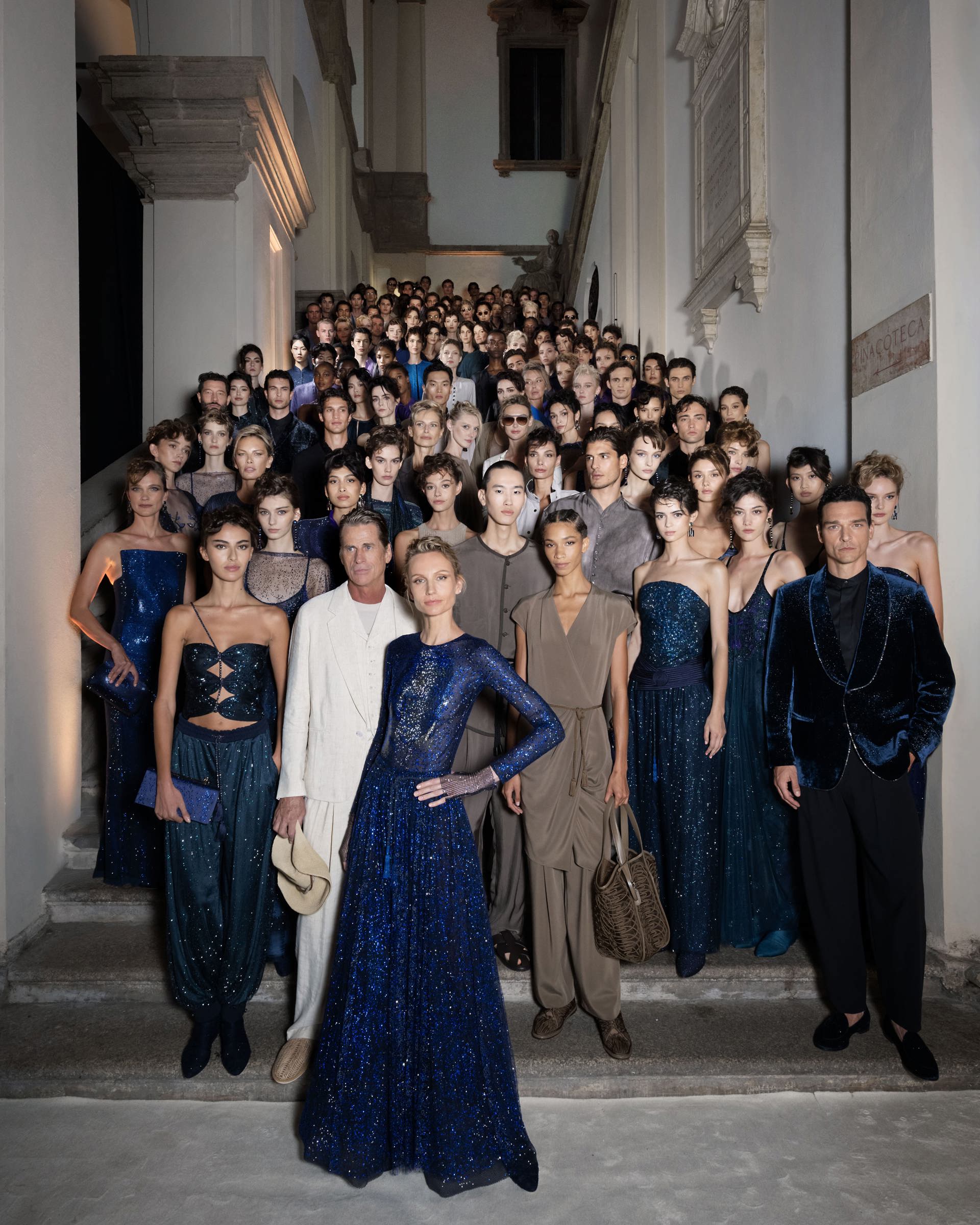
Armani
English version below
And so, it seems fair to say that Milan is back, with this fashion week unexpectedly delivering more meaning and desire than anyone might have anticipated. Above all, thanks to the impact Dario Vitale has thrown into the pond, rippling out day after day in conversations around fashion, gaining momentum and praise. Kathy Horyn, not exactly known for handing out compliments lightly, wrote in her review for «The Cut»: «By look 10, an oversized lavender blazer worn with faded royal blue pants and a red T-shirt, I was on board. And by look 22, a tailored charcoal suit with an unbuttoned yellow jean jacket under the coat, I was wondering where Dario Vitale had been all my life». A beginning that could now become a driving force for a collective sentiment, flipping the script and silencing a number of nasty speculations that had been swirling around the project. Or so we hope. Also because it’s been years since we’ve seen one of those small industry miracles where ideas triumph hands-down over any possible budget. The Versace show was precisely that (and in refocusing on ideas rather than the brute force of money, it proves how ingenuity and creative urgency are still) and in spite of everything, the only real power fashion should feed on. The only viable force.
The last big and long-awaited debut of these days was Louise Trotter as Creative Director of Bottega Veneta, succeeding the very talented and widely respected Matthieu Blazy, who in just a few days will be making his debut at Chanel in Paris, after leaving the historic brand in something of a coitus interruptus. Trotter, British, born in 1969, is one of those names that may not mean much to the general public, but who has a long and solid track record at brands like Calvin Klein, Lacoste, and Carven, all examples of companies that, in different ways, exist as brands, not as pedestals for the creatives behind them. This new role at Bottega Veneta, a brand that over the years has evolved from being a pure accessories manufacturer to a fully-fledged fashion house, a process rapidly accelerated by the arrival of Daniel Lee in 2018 and then by the aforementioned Blazy, is therefore something both new and familiar. Her appointment, announced in December 2024, was met with curiosity. In the ten months that passed between that announcement and her first show, a long time by today’s fashion standards, suggesting that Trotter may have struck a deal with Kering, Bottega’s parent company, to take her time and develop her vision away from the pressure of FOMO, interesting ideas were nonetheless shared, raising expectations.
First, instead of showing last March, she organized a concert/reading by Patti Smith for the press and a few insiders, hinting at a direction and a cultural reference point without presenting any products. Then in June came a black-and-white campaign shot by Jack Davison, one of the most praised in recent times. Among others, portraits of Tyler, The Creator, Julianne Moore, Lorenzo Musetti, Ed Buchanan, Neneh Cherry, Lauren Hutton, Terrance Lau, Zadie Smith, and Dario Argento were captured in black and white, each paired with a close-up of their hands. A lateral and intelligent way of talking about craftsmanship and savoir faire, steering clear of tired luxury codes.
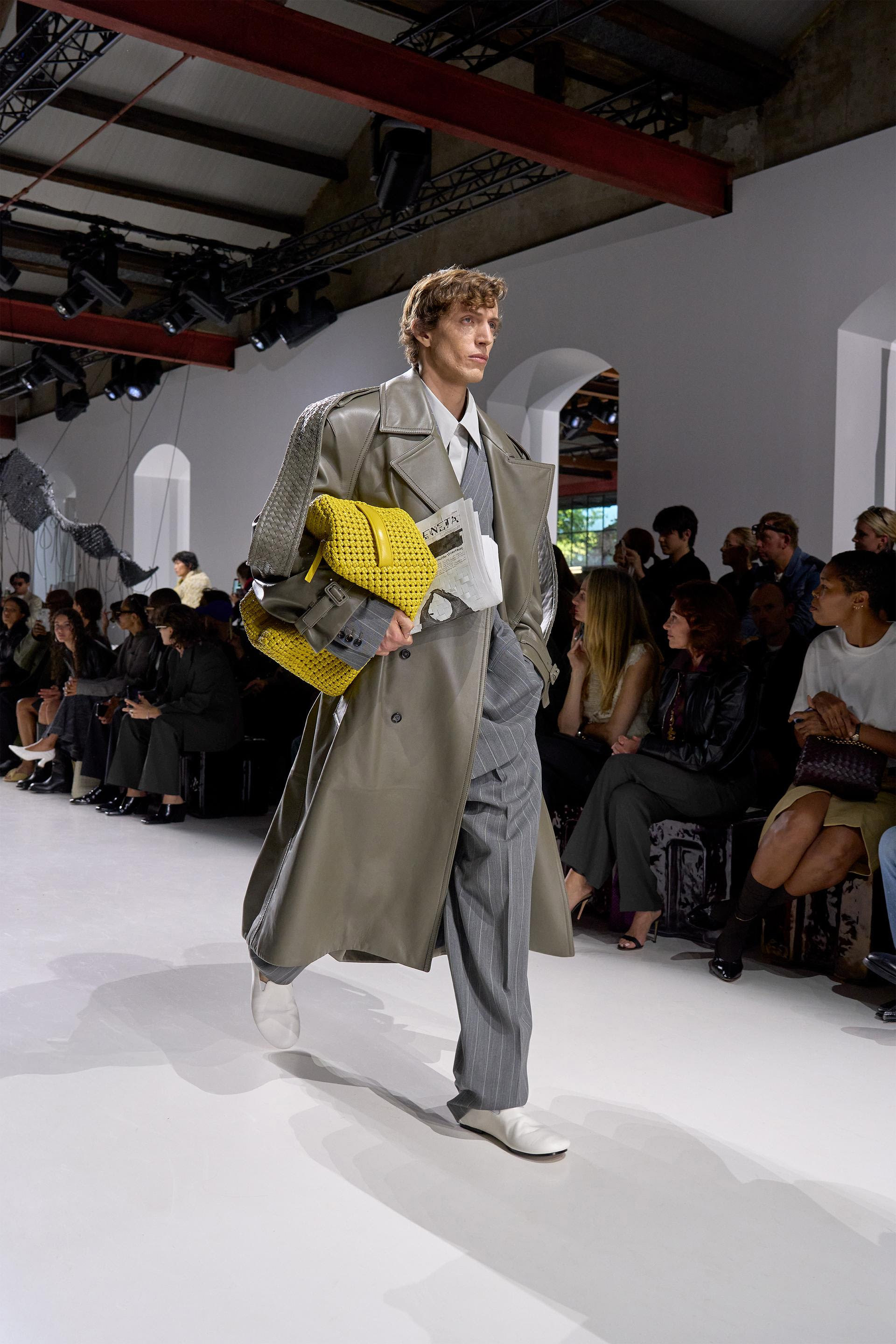
And so we arrived at Friday’s show, which unfortunately, despite those more-than-encouraging premises, didn’t fully meet expectations. To be clear, nothing was wrong: the ultra-luxury expected of Bottega Veneta was all there, in both materials and construction, which were on par with, if not superior to, her predecessors, and perhaps even more adaptable to a hypothetical everyday wear (though still only feasible for a very limited global elite).
But what was missing (and what Blazy had carefully built and refined season after season with notable flair) was the definition of a tone that extended beyond the clothes.
Blazy’s Bottega Veneta, alongside its perfection and luxury-induced Stendhal syndrome (which Trotter continues to deliver excellently), also included sly subtexts, unruly provocations, and a rigorously playful spirit. It mixed art and design, turned the Sacco armchair by Gatti, Paolini, and Teodoro for Zanotta into a giant stuffed animal with ears, spread Gaetano Pesce’s PVC across show sets, and invited Cicciolina (Ilona Staller) to a runway show.
These weren’t stunts, but ways of threading a brand identity through adjacent worlds, constructing a layered diorama of meaning around the core of luxury and woven leather, speaking to the audience that, even if they don’t buy, defines what’s cool and what’s not. But this is still a solid debut, and as always, time must be allowed to do its work. It would be enough to blend the pieces she’s shown in past chapters into a more cohesive and risen whole, to create a result greater than the sum of its parts.
Maximilian Davis at Ferragamo, while not fully committing to it, flirts with the «Let’s Do It Like Prada» approach. Davis, in his three years as creative director, has repeatedly shown he has both ideas and the skill to execute them. But even in this latest collection, he seems more focused on constructing garments, «beautiful» and stereotypically luxurious, with a lightly hinted sensuality in the reworked slip dresses and men’s kimono-jacket suits, than on constructing the people (or characters) who should be wearing them.
Rocco Iannone at Ferrari, a fashion experiment that, in all its oddity, could afford to make sparks fly but has never really dared, has, for the first time, presented a collection that’s cohesive and clear, with well-defined boundaries and intentions. Unfortunately, this cohesion seems rooted in a past we’ve already moved beyond. Still, it’s a step forward.
Closing out Saturday evening: Giorgio Armani. And once again, as with his Emporio Armani show, it wasn’t so much a runway presentation as a public, sacred, and moving farewell, between candlelight and major Hollywood stars whose careers Armani helped shape over the decades. Richard Gere was there (no need to explain Armani’s role in defining male allure in «American Gigolo», the film that opened the 1980s), and so was Lauren Hutton, the female lead in the same movie. The show’s invitation was a T-shirt printed with a famous Bob Krieger photograph of Mr. Armani in a tuxedo. And in the end, for fifty years in fashion, Armani has been exactly this: a style and a world, stretching from the heights of luxury to a simple black T-shirt.


